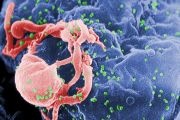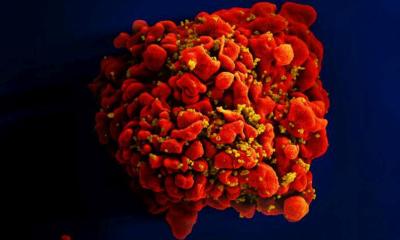New treatment guidelines for HIV infection
An international panel of physicians has updated the guidelines and recommendations for antiretroviral treatment of adult human immunodeficiency virus (HIV) infection after evaluating recent data, according to an article in JAMA, a theme issue on HIV/AIDS.

An international panel has updated the treatment guidelines for HIV infection.
The field of antiretroviral therapy continues to evolve rapidly, and, to maintain the highest possible standard of care, treatment guidelines must continually be refined to assist the complex decision-making process, according to the authors of an article in the August 6 issue of JAMA . “For a disease that has been transformed from almost uniformly fatal to manageable over decades, the impact of treatment decisions is substantial.” They add that the availability of new antiretroviral drugs and formulations, including drugs in new classes, and recent data on treatment choices for antiretroviral patients warrants an update of the International AIDS Society–USA guidelines.
Therefore Scott M. Hammer of Columbia University College of Physicians and Surgeons in New York, and the International AIDS Society–USA Panel, presented the recommendations of the panel at a JAMA media briefing on HIV/AIDS. Dr. Hammer and members of the panel analyzed new data in the field from the last two years to provide guidelines in key areas of antiretroviral management, including when to start therapy, choice of initial regimens, patient monitoring, and the approach to treatment failure. The latter emphasizes the role of recently approved drugs in assisting clinicians with constructing regimens that will keep HIV suppressed even in the face of multidrug resistant virus.
When to Start Antiretroviral Therapy
New data and considerations support initiating therapy before CD4 cell count declines to less than 350/µL. In patients with 350 CD4 cells/µL or more, patient readiness, drug interactions, adherence challenges, toxicities and cost should be considered when determining whether to initiate therapy.
Rapid decline in CD4 cell count (i.e., more than 100/µL per year), a plasma HIV-1 RNA level more than 100,000 copies/mL, risk factors for cardiovascular disease, and the presence of certain other diseases (e.g., active hepatitis B or C virus co-infection and HIV-associated nephropathy [a disease affecting the kidneys]) should be considered in deciding whether to initiate therapy in patients with CD4 cell counts more than 350/µl.
What Antiretroviral Regimen to Start
The authors write that the initial regimen must be individualized, particularly in the presence of other existing illnesses, but usually will include efavirenz or a ritonavir-boosted protease inhibitor plus two nucleoside (or nucleoside plus nucleotide) reverse transcriptase inhibitors (nRTIs). Recommended nRTIs in the initial regimen are the fixed-dose combinations tenofovir/emtricitabine or abacavir/lamivudine. Simplicity of therapy, pill number, tolerability, desire for pregnancy, drug interactions and primary drug resistance are likely to influence the choice between these recommended options.
Patient Monitoring
The goal of antiretroviral therapy is to reduce and maintain a plasma HIV-1 RNA level of less than 50 copies/mL. Plasma HIV-1 RNA levels should be monitored frequently when treatment is started or changed for virologic failure (e.g., at 2, 4, 8, and every 4 weeks thereafter) until it reaches levels below the assay detection limits, and regularly thereafter (e.g., 3-4 times per year). Genotypic testing for drug resistance should be performed for certain patients. Appropriate assessment of other conditions and monitoring for toxicity should be performed before initiating treatment and during follow-up.
Changing Therapies
Virologic failure on an initial nonnucleoside reverse transcriptase inhibitor (NNRTI)- or ritonavir-boosted protease inhibitor-based regimen should be treated early with, ideally, three fully active drugs. For multi-drug resistance, three active drugs, including new classes of agents whenever possible, should be used.
The appropriate use of new agents, such as raltegravir (an integrase strand transfer inhibitor), maraviroc (a CCR5 antagonist), and etravirine (a “second generation” NNRTI), in combination with older agents can help achieve the goal of maintaining a plasma HIV-1 RNA level below 50 copies/ml even in patients with high degrees of treatment experience and multidrug resistant virus.
The authors write that despite advances in the treatment of HIV infection, “disease management remains challenged by toxicities, maintenance of adherence, clinical manifestations related to both the drugs and the HIV infection itself, and the threat of drug resistance. Sustainability and expansion of the progress achieved will depend on maintaining a robust drug development pipeline and the ability to deliver effective therapy and monitoring tools to the world’s affected populations.”
“With creativity and political will, the progress and individualized approach to antiretroviral therapy evident in the developed world can be adapted to the public health approach in the developing world, where 90 percent of the world’s HIV-infected population lives.” (JAMA. 2008;300[5]:555-570.)
Picture: CDC/ C. Goldsmith, P. Feorino, E. L. Palmer, W. R. McManus
04.08.2008
More on the subject:











